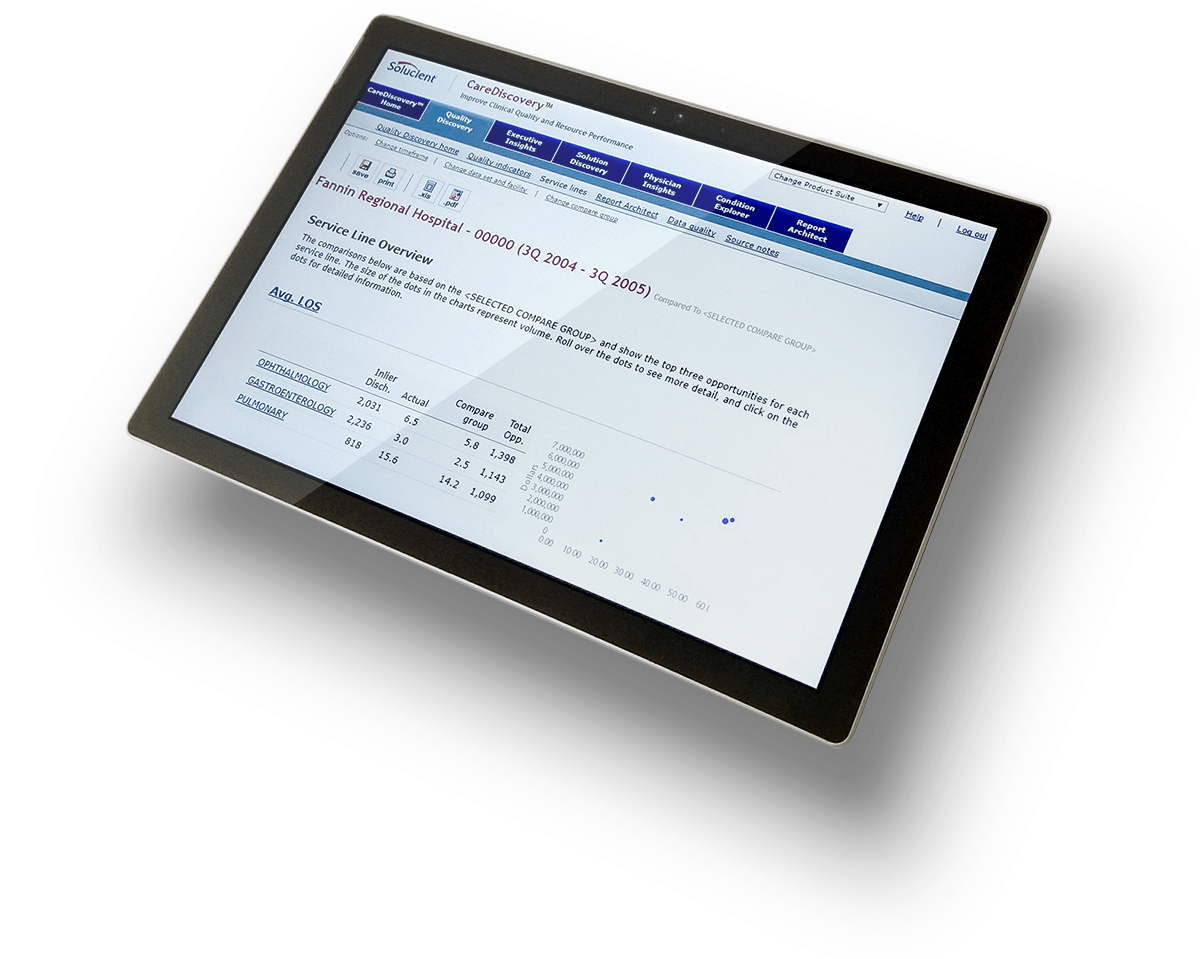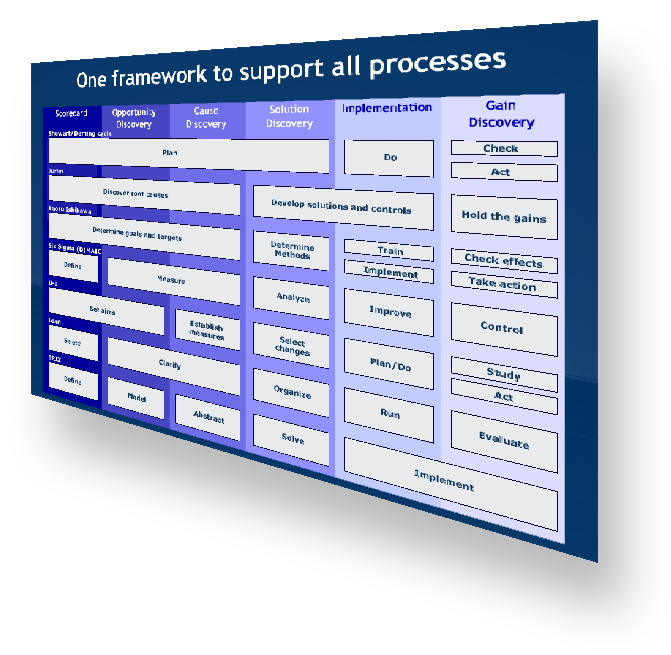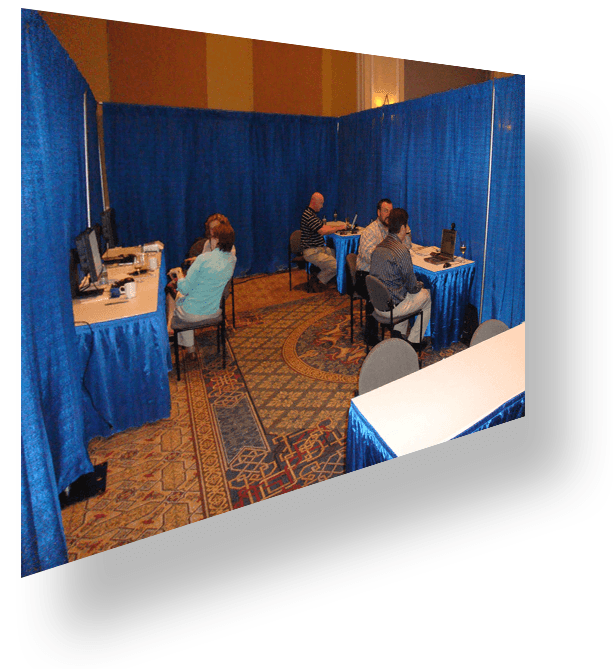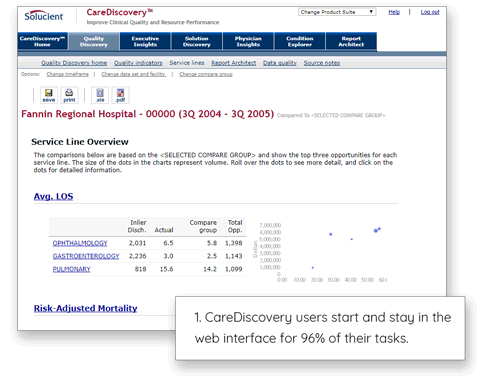Unlock Data to Improve Hospital Quality

My Role
- Ethnographic Research
- Interviews
- Usability Teting
- Rapid Iterantive Design
- Interface Design
Summary
Consolidated multiple legacy products in the CareDiscovery Platform and provided a great experience.
Problem
Quality improvement efforts were slowed by a lack of access to data, and analysts had a variety of tools with frustratingly different interfaces to learn and multiple passwords to remember.
Solucient’s clinical performance unit had multiple legacy products and needed to consolidate them into a new SaaS-based enterprise platform. Most of our customers were data analysts, but we also wanted to reach the teams in the hospital who were not as literate with data tools. We also only had 12 months to launch.
Ad hoc data tools are powerful but have limitations. These interfaces are often too complex for non-technical users. Ad hoc tools can also miss unexpected variances and unpredictable trends - you must to know what you are looking for. I needed to find a solution that unlocked access to data for everyone in the hospital.
Solution Overview
- Consolidated legacy products in the CareDiscovery Platform with single sign-on.
- Built a series of guided reports to allow everyone access. Integrated these reports closely with the ad hoc tool for further analysis.
Process
- Assess all legacy products creating flow diagrams
- Conduct user need assessment, interviews, and testing
- Data Analysts
- Hospital Staff
- Test solutions using rapid iterative prototyping
- On-site ethnographic research for hospital QA teams
Conference Interviews and Rapid Iterative Testing
I set up a user testing lab at conferences. I had access to thousands of users. I brought a team of 3-4 UX'ers and engineers. We started with user interviews. Then tested low fidelity wireframes. We then conducted rapid iterative prototype testing.
In rapid iterative testing, each of the four testers could engage with two customers per hour. That is a total of eight users an hour. We would quickly meet and update the prototype to solve issues. Then we would test those changes. This continued all day throughout the conference - it was fantastic! We could achieve deep user empathy and 100% task completion rates very efficiently.
Guided Reports and Ad Hoc Together
I was faced with two user users. The first was the data analyst that liked complex data queries and the ability to interrogate data themselves. The second group was hospital professionals - they were not as technical and wanted answers to their biggest questions.
I merged the ease of the web interface with the power of the ad hoc tool. Users could stay in the web interface, or seamlessly link into the ad hoc tool. It was so unique that Cognos gave me the Partner Innovation Award for my work.
Quotes
"Based on a review of the top 20 DRGs, the hospitalist program demonstrated more than $5 million in savings to the hospital. Detailed data and hospitalist awareness of that data is critical to meeting our goals."
- Brian Kendall, MD, Medical Director, Hospitalist Service, Regional Medical Center of Orangeburg and Calhoun Counties
"CareDiscovery Quality Measures has improved the rapport between the quality department and the medical staff. We’re giving them the actionable data they wanted, and they’re appreciative of it."
- Rebecca Jessie, Director of Quality Improvement and Patient Safety, Rockingham Memorial Hospital



